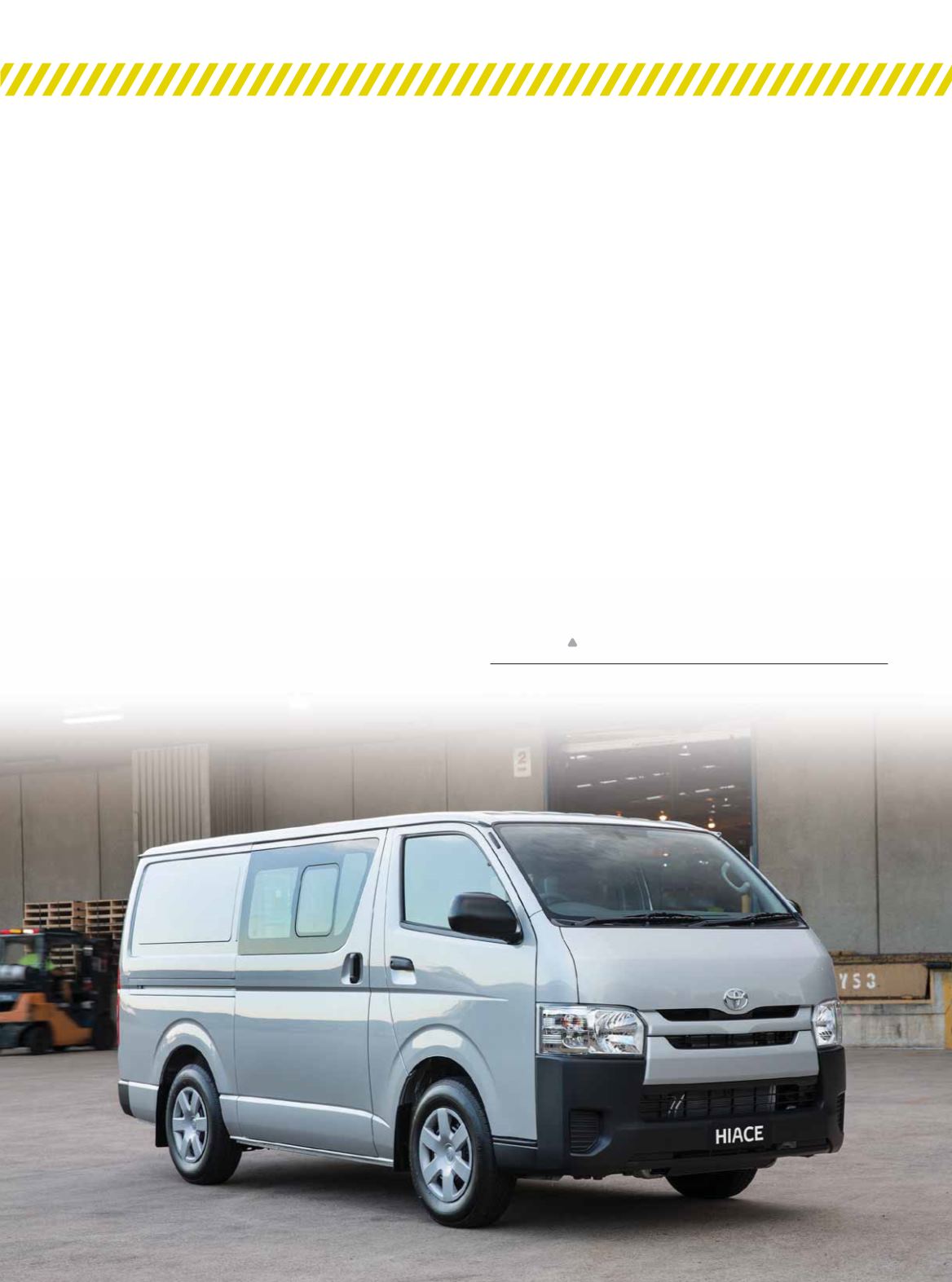

B U I L D I N G CO N N E C T I O N
S UMM E R 2 0 16
8 3
Toyota has upgraded its diesel-powered HiAce work van as
stricter regulations come into force in Australia.
From November 1, all new vehicles designated ‘light-duty’
– including work vans and utes – must comply with the Euro 5
emissions standard. Both petrol and diesel engines are affected,
with diesel vehicles required to meet a particle limit.
As a result, several manufacturers have been working on
upgrades of their workhorse fleets.
For Toyota’s top-selling HiAce – which is sold as a long-
wheelbase (LWB) van, five-seat LWB crew van and Super LWB van
– the petrol-powered versions were upgraded to Euro 5 early last
year, when the company also added extra safety equipment such
as electronic stability control, brake assist, hill-start assist and an
emergency stop signal that automatically engages when severe
braking force is applied.
Now, the 3.0L ‘1KD-FTV’ four-cylinder turbo-diesel engine has
received attention to bring it up to speed, including a recalibration
and the addition of a particulate filter offering a choice of manual
or automatic regeneration.
There is no change to output – 100kW of power at 3400rpm and
300Nm of torque at 1200rpm – and the transmission choice is still
five-speed manual as standard or four-speed automatic for an
extra $2550.
Toyota claims fuel economy improvements of up to 4.6%
have been achieved on the official urban cycle, depending on
the variant. The biggest gains around town – where the HiAce
naturally performs most of its duties – were achieved with the
manual LWB crew van and Super LWB van, both of which return
10.3L per 100km.
That said, the benchmark combined-cycle rating, which
considers outer-urban conditions and takes an average of the
two, sees the fuel consumption figure largely unchanged – or
marginally higher than before. This ranges from 8.1L/100km on
the LWB van manual to 9.2L/100km on the Super LWB auto.
For comparison, the 2.7L ‘2TR-FE’ four-cylinder petrol
produces 118kW at 5200rpm and 243Nm at 4000rpm, driving
through a five-speed manual or six-sped auto. It returns between
9.8L/100km and 10.5L/100km on the combined cycle, while urban
figures can be as high as 13.3L/100km (LWB van manual).
Toyota also now offers the choice of steel panel on the left-hand
side (rather than a window) for the white automatic LWB diesel
van, responding to customers who preferred to forego the added
visibility offered by the window for the extra privacy and security
brought with a panel.
HiAce pricing recently increased by 2.0%, with the Australian
subsidiary blaming currency movements as forcing its hand.
Pricing starts from $33,650 plus on-road costs for the LWB
petrol manual van, topping out at $48,440 for the Super LWB
diesel auto.
Toyota
www.toyota.com.auToyota HiAce
















